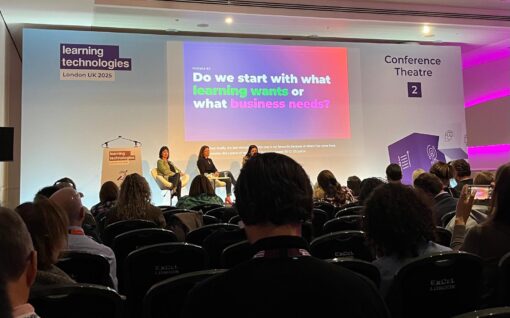Research Digested: The State of Organisations, 2023: Ten shifts transforming organisations, McKinsey & Company
A snapshot of useful research for L&D and workplace professionals
Why read this report
As the title suggests, this report looks at the burning issues of the day and for that reason, it’s worth reading. For those who are pressed for time, there’s a quick version that summarises the main points. Or there’s a longer pdf read (92 pages) for those who want to find out more.
About this research
The report, which surveyed more than 2,500 business leaders around the world, is part of ongoing McKinsey research into organisational shifts facing organisations. It also features insights from business leaders and organisations that taking a strategic approach to organisational change.
Standout stats
The ten shifts are:
- Increasing speed, strengthening resilience – resilient companies yielded 50% more total shareholder return than less resilient companies during the 2020-2021 economic recovery period. But, half the respondents said their organisation is not prepared to react to future shocks.
- ‘True hybrid’: the new balance of in-person and remote work – most organisations (roughly 90%) have embraced hybrid work models since the pandemic. And employees like it – four out of five employees want to remain hybrid, so organisations will need to think about what support and structure is needed to get the most out of in-person and remote working.
- Making way for applied AI – AI is here, there’s no doubt about that. In 2022, organisations used an average of 3.8 AI capabilities (eg, natural-language generation and computer vision), double the 1.9 used in 2018. Many companies are capitalising on AI now – to create sustainable talent pipelines, to improve ways of working and to make faster, data-driven structural changes.
- New rules of attraction, retention and attrition – people are revising their attitudes to work and at work, with many people saying they plan to leave their jobs in the near future. Organisations need to tailor the employee value proposition to individualised preferences to close the gap between what workers want and what companies need. This will help them recruit and retain the talent they need.
- Closing the capability chasm – very few respondents (5%) think their organisation has the capability it needs. In order to achieve a competitive advantage and outperform competitors, organisations need to build institutional capabilities around people, processes and technology.
- Walking the talent tightrope – the highest performers in a role are 800% more productive than average performers in the same role. But between 20 and 30% of critical roles aren’t performed by the most appropriate people. Organisations really need to focus on matching top talent to the highest-value roles.
- Leadership that is self-aware and inspiring – a quarter of the respondents say their leaders are engaged, passionate and inspire employees to the best-possible extent. Leaders need to up their game. They need to be self-aware and inspiring, leading themselves, their peers in the C-suite and at scale in their organisation. And they need to understand the operating environments around them.
- Making meaningful progress on diversity, equity and inclusion (DEI) – 70% say their organisation expresses transformative DEI aspirations, but only 47% say they have the infrastructure to realise those aspirations. This indicates that while many organisations are prioritising DEI, it doesn’t always translate into meaningful progress. Leaders need to identify opportunities to address that and effect change in their organisations, their communities and society generally.
- Mental health; investing in a portfolio of interventions – employees with mental health and wellbeing challenges are 4x more likely to want to leave their organisation. Employers need to take a systematic approach to tackling the causes of mental health and wellbeing challenges and realise that one off and incremental fixes aren’t enough.
- Efficiency reloaded. Efficiency is one of three top priorities for more than a third of leaders. Efficiency isn’t about managing crises or getting the same work done with fewer resources – it’s about deploying resources to where they matter the most. Roughly 40% of respondents say complex organisational structures are a cause of inefficiency, with a similar number citing unclear roles and responsibilities.
Final word
This report covers several topics that are of (huge) concern to L&D, HR and business leaders – AI, recruitment and retention, talent management, making hybrid working work….Some of these issues are complex and far-reaching – it’s about the future of work and there’s a lot to grapple with. But, organisations do need to understand the changing nature of work and adapt accordingly because change will happen, whether leaders like it or not. Best to change with change and embrace the opportunities, rather than fight it or be left behind. Are the shifts opportunities or challenges? It depends on how L&D/HR/business leaders approach them.
Report reading time: 25 minutes
Media: pdf
Link: https://www.mckinsey.com/capabilities/people-and-organizational-performance/our-insights/the-state-of-organizations-2023

